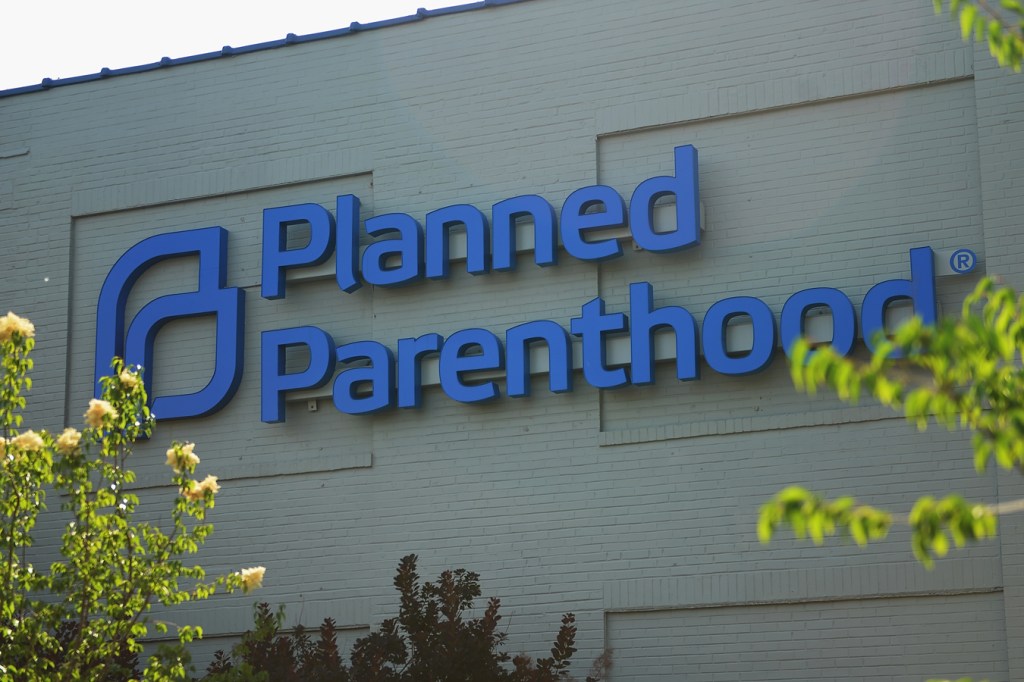SAN FRANCISCO — Monday’s oral arguments before a federal appeals court were intended to center on whether the Trump administration’s new Protect Life Rule should stay in effect while lower courts consider a legal challenge by nearly two dozen states, including California, as well as the American Medical Association, Planned Parenthood and other opponents.
The new regulation denies Title X federal family planning funds to health clinics that refer women for abortions, and requires doctors and nurses at such clinics to refer all women for prenatal care after they test positive for pregnancy, even if a patient wants an abortion.
But rather than constrain discussion to the merits of reinstating a preliminary injunction on the rule while the broader case plays out, an 11-judge panel of the 9th U.S. Circuit Court of Appeals in San Francisco dove into the heart of the matter: Do the restrictions on abortion referrals for these low-income clinics constitute a lawful policy change by a conservative administration? Or, do they amount to an arbitrary disruption of medical care for millions of poor and uninsured teens and adults?
Here are key takeaways from the hearing.
1. Could a tilt be detected on the bench?
Of the 11 judges randomly selected for the en banc hearing, four were appointed by President Bill Clinton, a Democrat, and seven by Republican presidents (Ronald Reagan, George W. Bush and Donald Trump). In their questions to attorneys during the hour-long proceeding, the judges appointed by Clinton seemed more concerned about the practical impact of the Protect Life Rule on doctors and patients. Judge Richard A. Paez, a Clinton appointee, questioned the rationale behind allowing doctors to counsel patients about medical abortion in a “nondirective” manner, but forbidding them to refer patients to an abortion provider. “Common sense suggests that when you go to a doctor, and the doctor gives you advice, one part of that is going to be recommendations or a suggestion you see somebody. They give you a referral.”
2. The government had strong defenders.
The judges appointed by Republicans seemed sympathetic to the government’s argument that the Trump administration can lawfully set limits on federal programs. “It’s always easy when balancing hardships to look at the faces” of people, “but what about the harm to the government?” asked Justice Consuelo Callahan, a Bush appointee. “Elections have consequences,” she said.
3. Is the jar half-full or half-empty?
The government’s attorneys argued that only 18 grantee organizations out of 90 have stopped taking Title X funds rather than comply with the new restrictions, bolstering their claim that providers have not left the program en masse. But opponents pointed out that the grantees that have pulled out provide a major portion of care for low-income patients, encompassing 910 out of about 4,000 clinics that receive Title X funds. All 410 of Planned Parenthood’s clinics have opted to stop taking Title X funds; they served 40% of the 4 million patients receiving services under the program. Another 500 clinics run by states, cities and other health providers have withdrawn as well. The government says it’s awarding additional money to clinics that stay in the program to fill the gaps.
4. Clinics are in a pickle.
To prevail, opponents need to demonstrate that the new restrictions are causing irreparable harm to Title X patients. The more clinics drop out of the program, the more medical care is disrupted, which proves the opponents’ point that the Protect Life Rule thwarts the goals Congress intended for the program (to provide family planning services to low-income people). Family planning clinics rely heavily on Title X funds; the program makes up about 19% of their revenue. Without those grants, clinics have turned to patients and donors to contribute, and it’s unclear how long clinics can survive. But clinics that remain in the Title X program, despite concerns about restrictions on physicians’ speech, bolster the Trump administration’s argument that the new rules are not onerous.
5. The Supreme Court has spoken, so who are we to decide?
The justices, both liberal and conservative, pointed to a 1991 decision by the Supreme Court, Rust v. Sullivan, that upheld anti-abortion regulations by the Reagan administration that are similar to those issued by Trump health officials. One of those Reagan-era regulations forced any clinic that provides or refers patients for abortions to have physically separate buildings and to be financially separate entities. After Clinton was elected, the physical separation requirement never fully took effect. But the Trump administration has revived the physical separation requirement, set to take effect in March. “If the Supreme Court says physical separation is just fine,” said Justice Milan Smith, a Bush appointee, “who are we to decide?”
The justices are expected to issue their ruling in the coming weeks. That ruling will pertain only to whether the abortion restrictions can remain in place while the broader case makes its way through the federal court system.
This story was produced by Kaiser Health News, an editorially independent program of the Kaiser Family Foundation.
